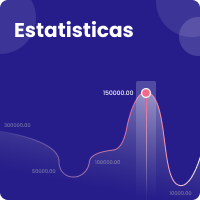A adoção de sistemas de Business Intelligence & Analytics na contabilidade de gestão por entidades da Administração Pública
uma revisão da literatura
Resumo
O presente trabalho examina os artigos publicados entre 2001 e 2020 que versam sobre a utilização de sistemas de Business Intelligence & Analytics (BI&A) pela contabilidade de gestão no setor público. A partir de uma revisão de 54 trabalhos, foi possível dividir as pesquisas em cinco clusters de acordo com o foco da investigação: BI&A e gestão da infraestrutura urbana; papel da informação na gestão da contabilidade governamental; performance nas unidades governamentais; avaliação de sistemas de gestão de desempenho; big data e suas aplicações. O estudo de caso foi a metodologia dominante na amostra, e prevaleceu a utilização dos pressupostos da New Public Management como embasamento teórico dos autores. Entre os principais resultados, concluiu-se que a aplicação dos modernos sistemas de informação impacta positivamente o conhecimento, a tomada de decisão e a performance nas organizações públicas, desde que acompanhada por treinamento, engajamento e aceitação dos dispositivos por parte dos agentes envolvidos. Sugestão de uma agenda futura de pesquisa é apresentada com base nas lacunas identificadas na amostra.
Downloads
Referências
Abai, N. H. Z., Yahaya, J., Deraman, A., Hamdan, A. R., Mansor, Z. e Jusoh, Y. Y. (2019). Integrating business intelligence and analytics in managing public sector: An empirical study. International Journal on Advanced Science Engineering Information Technology, 9(1), 172-180. doi:
https://doi.org/10.18517/ijaseit.9.1.6694
Abbas, S. W., Rasul, S. e Ahmad, M. (2019). Unreported data sources in public sector organizations. Statistical Journal of the IAOS, 35, 359-370. doi:
https://doi.org/10.3233/SJI-180466
Abubakar, M. A., Elrehail, H., Alatailat, M. A. e Elçi, A. (2019). Knowledge management, decision-making style and organizational performance. Journal of Innovation e Knowledge, 4(2), 104-114. doi:
https://doi.org/10.1016/j.jik.2017.07.003
Agostino, D. e Arnaboldi, M. (2016). Social media data used in the measurement of public services effectiveness: Empirical evidence from Twitter in higher education institutions. Public Policy and Administration, 32(4), 296-322. doi:
https://doi.org/10.1177/0952076716682369
Allen, D. K., Brown, A., Karanasios, S. e Norman, A. (2013). How should technology-mediated organizational change be explained? A comparison of the contributions of critical realism and activity theory. MIS Quarterly, 37(3), 835-854. doi:
https://doi.org/10.25300/MISQ/2013/37.3.08
Aristigueta, M. P. e Zarook, F. N. (2011). Managing for results in six states. Public Performance e Management Review, 35(1), 177-201. doi:
https://doi.org/10.2753/PMR1530-9576350109
Awoonor-Williams, J. K., Schmitt, M. L., Tiah, J., Ndago, J., Asuru, R., Bawah, A. A. e Phillips, J. F. (2016). A qualitative appraisal of stakeholder reactions to a tool for burden of disease-based health system budgeting in Ghana. Global Health Action, 9(1) 30448. doi:
https://doi.org/10.3402/gha.v9.30448
Ballard, A. (2020). Promoting performance use through data visualization: Evidence from an experiment. Public Performance e Management Review, 43(1), 109-128. doi:
https://doi.org/10.1080/15309576.2019.1592763
Beckett-Camarata, J. (2009). Local government measurement and use of performance accounting and financial reporting data in planning and budgeting decision support. Public Performance e Management Review, 33(2), 255-265.
https://doi.org/10.2753/PMR1530-9576330205
Benzies, K. M., Premji, S., Hayden, K. A. e Serrett, K. (2006). State-of-the-evidence reviews: Advantages and challenges of including grey literature. Worldviews on Eidence-Based Nursing, 3(2), 55-61. doi:
https://doi.org/10.1111/j.1741-6787.2006.00051.x
Boyne, G. A. (2002). Public and private management: What's the difference? Journal of Management Studies, 39(1) 97-122. doi: https://doi.org/10.1111/1467-6486.00284
https://doi.org/10.1111/1467-6486.00284
Bruins, R. J., Munns Jr, W. R., Botti, S. J., Brink, S., Cleland, D., Kapustka, L.; Lee D.: Luzadis V.; McCarthy L.F.; Rana N.; Rideout D. B.; Rollins M.; Woodbury P.; Zupko M. (2009). A New process for organizing assessment of social, economic, and environmental outcomes: Case study of wildland fire management in the USA. Integrated Environmental Assessment and Management, 6(3), 469-483. doi:
https://doi.org/10.1897/IEAM_2009-075.1
Campanelli A. S. e Parreiras, F. S. (2015). Agile methods tailoring - A systematic literature review. Journal of Systems and Software, 110, 85-100. doi:
https://doi.org/10.1016/j.jss.2015.08.035
Cheng, S. M. e Thompson, L. J. (2006). Cancer Care Ontario and integrated cancer programs: Portrait of a performance management system and lessons learned. Journal of Health, Organization and Management, 20(4), 335-343. doi:
https://doi.org/10.1108/14777260610680131
Cooper, D. J. e Morgan, W. (2008). Case study research in accounting. Accounting Horizons, 22(2), 159-178. doi:
https://doi.org/10.2308/acch.2008.22.2.159
Cuganesan, S., Dunford, R. e Palmer, I. (2012). Strategic management accounting and strategy practices within a public sector agency. Management Accounting Research, 23(4), 245-260. doi:
https://doi.org/10.1016/j.mar.2012.09.001
Dabak, S. V., Pilasant, S., Mehndiratta, A., Downey, L. E., Cluzeau, F., Chalkidou, K., Luz, A. C. G., Youngkong, S. e Teerawattananon, Y. (2018). Budgeting for a billion: Applying health technology assessment (HTA) for universal health coverage in India. Health Research Policy and Systems, 16(115), 1-7. doi:
https://doi.org/10.1186/s12961-018-0378-x
Denhardt, R. B. e Denhardt, J. V. (2000). The new public service: Serving rather than steering. Public Administration Review, 60(6), 549-559. doi:
https://doi.org/10.1111/0033-3352.00117
Dyussembekova, G. S., Krivochshyokova, L. P., Kunyazova, S. K., Khamitova, D. M., Aiguzhinova, D. Z. (2016). Controlling the implementation of the public-private partnership (ppp) projects in the system of local strategic management. Journal of Internet Banking and Commerce, 21 S(4). Recuperado de https://www.icommercecentral.com/open-access/controlling-the-implementation-of-the-publicprivate-partnership-ppp-projects-in-the-system-of-local-strategic-management.php?aid=76343eview=mobile.
Ebeling, M. R. e Bittner, J. (2007). Managing low-volume roads with wisconsin information system for local roads. Transportation Research Record, 1989(2), 277-283. doi:
https://doi.org/10.3141/1989-74
Elbashir, M. Z., Collier, P. A. e Sutton, S. G. (2011). The role of organizational absorptive capacity in strategic use of business intelligence to support integrated management control systems. Accounting Review, 86(1), 155-184. doi:
https://doi.org/10.2308/accr.00000010
Ferry, L. e Scarparo, S. (2015). An era of governance through performance management - New Labour's National Health Service from 1997 to 2010. Accounting History Review, 25(3), 219-238. doi:
https://doi.org/10.1080/21552851.2015.1091673
Fritzen, S. A. (2007). Crafting performance measurement systems to reduce corruption risks in complex organizations: the case of the World Bank. Measuring Business Excellence, 11(4), 23-32. doi:
https://doi.org/10.1108/13683040710837900
Galwey, D. e Ogilvie, B. (2010). An engagement framework for managing the Crown's ownership interests in the New Zealand tertiary education sector. Measuring Business Excellence, 14(1), 67-78. doi:
https://doi.org/10.1108/13683041011027463
Gotangco, C. K., See, J., Dalupang, J. P., Ortiz, M., Porio, E., Narisma, G., ... e Dator‐Bercilla, J. (2016). Quantifying resilience to flooding among households and local government units using system dynamics: A case study in Metro Manila. Journal of Flood Risk Management, 9, 196-207. doi:
https://doi.org/10.1111/jfr3.12222
Herbohn, K, Herbohn, J., Hartebrodt, C. e Smith, C. (2013). Using a balanced scorecard to improve the management of natural resources: Experiences from Baden-Württemberg. Society e Natural Resources, 26(8), 865-882. doi:
https://doi.org/10.1080/08941920.2012.719999
Herschel, R. T. e Jones, N. E. (2005). Knowledge management and business intelligence: The importance of integration. Journal of Knowledge Management, 9(4), 45-55. doi:
https://doi.org/10.1108/13673270510610323
Iyengar, R., Mahal, A. R., Aklilu, L., Sweetland, A., Karim, A., Shin, H.,Aliyu, B., Park, J.E., Modi, V., Berg, M. e Pokharel, P. (2016). The Use of Technology for Large-scale Education Planning and Decision-making. Information Technology for Development, 22(3), 525-538. doi:
https://doi.org/10.1080/02681102.2014.940267
Jääskeläinen, A. e Roitto, J. M. (2014). Drivers of personnel satisfaction towards performance information usage: Findings from Finnish municipalities. International Journal of Public Sector Management. doi:
https://doi.org/10.1108/IJPSM-03-2014-0044
Jajac, N., Knezic, S. e Marovic, I. (2009). Decision support system to urban infrastructure maintenance management. Organization, Technology and Management in Construction, 1(2). doi: https://hrcak.srce.hr/65018
Jang, H. (2019). A decision support framework for robust ReD budget allocation using machine learning and optimization. Decision Support Systems, 121, 1-12. doi:
https://doi.org/10.1016/j.dss.2019.03.010
Jeong, S. e Oh. Y. (2019). New development: Lessons and recommendations from South Korea's experiences with integrated financial management information systems. Public Money e Management, 39(8), 599-601. doi:
https://doi.org/10.1080/09540962.2019.1598201
Johnson, T. e Kaplan, R. S. (1987). Relevance lost: The rise and fall of management accounting. Harvard Business School Press.
Jovanovic, T. e Vasicek, V. (2020). The role and application of accounting and budgeting information in government financial management process - A qualitative study in Slovenia. Public Money e Management. doi:
https://doi.org/10.1080/09540962.2020.1724405
Kinra, A., Hald, K. S., Mukkamala, R. R. e Vatrapu, R. (2020). An unstructured big data approach for country logistics performance assessment in global supply chains. International Journal of Operations e Production Management. doi:
https://doi.org/10.1108/IJOPM-07-2019-0544
Koornneef, H., Verhagen, W. J. C. e Curran, R. (2020). A decision support framework and prototype for aircraft dispatch assessment. Decision Support Systems, 135, 113338. doi: https://doi.org/10.1016/j.dss.2020.113338
https://doi.org/10.1016/j.dss.2020.113338
Kum, H. C, Stewart, C. J., Rose, R. A. e Duncan, D. F. (2015). Using big data for evidence based governance in child welfare. Children and Youth Services Review, 58, 127-136. doi:
https://doi.org/10.1016/j.childyouth.2015.09.014
Kumari, B., Madhukar, A. e Chattoraj, I. (2020). E-profiling ReD involvement/earnings of researchers: a G2E tool for performance management at CSIR-NML. International Journal of Productivity and Performance Management. doi:
https://doi.org/10.1108/IJPPM-09-2019-0437
La Vincente, S., Aldaba, B., Firth, S., Kraft, A., Jimenez-Soto, E. e Clark, A. (2013). Supporting local planning and budgeting for maternal, neonatal and child health in the Philippines. Health research policy and systems, 11(1), 1-6. doi:
https://doi.org/10.1186/1478-4505-11-3
Langfield‐Smith, K. (2008). Strategic management accounting: how far have we come in 25 years?, Accounting, Auditing e Accountability Journal, 21(2), 204-228. doi:
https://doi.org/10.1108/09513570810854400
Lapsley, I. e Wright, E. (2004). The diffusion of management accounting innovations in the public sector: a research agenda. Management accounting research, 15(3), 355-374. doi:
https://doi.org/10.1016/j.mar.2003.12.007
Lavertu, S. (2016). We all need help: "Big data" and the mismeasure of public administration. Public administration review, 76(6), 864-872. doi:
https://doi.org/10.1111/puar.12436
Lewandowski, M. (2019a). Public managers' perception of performance information: the evidence from polish local governments. Public Management Review, 21(7), 988-1010. doi: https://doi.org/10.1080/14719037.2018.1538425
Lewandowski, M. (2019b). Organizational Drivers of Performance Information Use: The Perspective of Polish Local Governments. Transylvanian Review of Administrative Sciences, 15(58), 85-99. doi: http://dx.doi.org/10.24193/tras.58E.6.
https://doi.org/10.24193/tras.58E.6
Loeber, K. (2018). Big Data, Algorithmic Regulation, and the History of the Cybersyn Project in Chile, 1971-1973. Social Sciences, 7(4), 65. doi:
https://doi.org/10.3390/socsci7040065
Malmi, T. e Brown, D. A. (2008). Management control systems as a package -Opportunities, challenges and research directions. Management accounting research, 19(4), 287-300. doi: https://doi.org/10.1016/j.mar.2008.09.003.
https://doi.org/10.1016/j.mar.2008.09.003
Martin, J. e Spano, A. (2015). From performance management to strategic local government leadership: lessons from different cultural settings. Public Money e Management, 35(4), 303-310. doi:
https://doi.org/10.1080/09540962.2015.1047276
Mbelwa, L. (2015), "Factors Influencing the Use of Accounting Information in Tanzanian Local Government Authorities (LGAs): An Institutional Theory Approach", The Public Sector Accounting, Accountability and Auditing in Emerging Economies, 15, 143-177. doi: https://doi.org/10.1108/S1479-356320150000015006.
Miyata, M. (2011). Measuring impacts of e-government support in least developed countries: a case study of the vehicle registration service in Bhutan. Information Technology for Development, 17(2), 133-152. doi:
https://doi.org/10.1080/02681102.2010.537251
Mugnaini, R. e Strehl, L. (2008). Recuperação e impacto da produção científica na era Google: uma análise comparativa entre o Google Acadêmico e a Web of Science. Encontros Bibli: revista eletrônica de biblioteconomia e ciência da informação, (Esp), 92-105. doi:
https://doi.org/10.5007/1518-2924.2008v13nesp1p92
Munteanu, I. e Newcomer, K. (2020). Leading and learning through dynamic performance management in government. Public Administration Review, 80(2), 316-325. doi:
https://doi.org/10.1111/puar.13126
Myhre, O., Fjellheim, K., Ringnes, H., Reistad, T., Longva, K. S. e Ramos, T. B. (2013). Development of environmental performance indicators supported by an environmental information system: Application to the Norwegian defence sector. Ecological Indicators, 29, 293-306. doi:
https://doi.org/10.1016/j.ecolind.2013.01.005
Nixon, B. e Burns, J. (2012). The paradox of strategic management accounting. Management Accounting Research, 23(4), 229-244. doi:
https://doi.org/10.1016/j.mar.2012.09.004
Oliveira, S. F., Fürlinger, K. e Kranzlmüller, D. (2012). Trends in computation, communication and storage and the consequences for data-intensive science. In 2012 IEEE 14th International Conference on High Performance Computing and Communication e 2012 IEEE 9th International Conference on Embedded Software and Systems (pp. 572-579). IEEE. doi:
https://doi.org/10.1109/HPCC.2012.83
Ortner, E., Mevius, M., Wiedmann, P. e Kurz, F. (2016). Design of interactional decision support applications for e-participation in smart cities. International Journal of Electronic Government Research (IJEGR), 12(2), 18-38. doi: 10.4018/IJEGR.2016040102.
https://doi.org/10.4018/IJEGR.2016040102
Pettersen, I. J. e Nyland, K. (2006). Management and control of public hospitals - the use of performance measures in Norwegian hospitals. A case‐study. The International Journal of Health Planning and Management, 21(2), 133-149. doi:
https://doi.org/10.1002/hpm.835
Poljašević, J., Vašiček, V. e Jovanović, T. (2019). Comparative review of dual reporting in public sector in three south-east European countries. Journal of Public Budgeting, Accounting e Financial Management. doi:
https://doi.org/10.1108/JPBAFM-02-2019-0035
Rashedi, R. e Hegazy, T. (2016). Strategic policy analysis for infrastructure rehabilitation using system dynamics. Structure and Infrastructure Engineering, 12(6), 667-681. doi: https://doi.org/10.1080/15732479.2015.1038723.
https://doi.org/10.1080/15732479.2015.1038723
Reddick, C. G. (2009). The adoption of centralized customer service systems: A survey of local governments. Government Information Quarterly, 26(1), 219-226. doi:
https://doi.org/10.1016/j.giq.2008.03.005
Rhodes, R. A. W. (1996). The new governance: governing without government. Political studies, 44(4), 652-667. doi:
https://doi.org/10.1111/j.1467-9248.1996.tb01747.x
Richards, G., Yeoh, W., Chong, A. Y. L. e Popovič, A. (2019). Business intelligence effectiveness and corporate performance management: an empirical analysis. Journal of Computer Information Systems, 59(2), 188-196. doi:
https://doi.org/10.1080/08874417.2017.1334244
Rikhardsson, P. e Yigitbasioglu, O. (2018). Business intelligence e analytics in management accounting research: Status and future focus. International Journal of Accounting Information Systems, 29, 37-58. doi:
https://doi.org/10.1016/j.accinf.2018.03.001
Roslender, R. e Hart, S. J. (2003). In search of strategic management accounting: theoretical and field study perspectives. Management accounting research, 14(3), 255-279. doi:
https://doi.org/10.1016/S1044-5005(03)00048-9
Rossi, F. M. e Aversano, N. (2015). Advancing performance measurement. International Journal of Productivity and Performance Management, 64(1), 76-93. doi:
https://doi.org/10.1108/IJPPM-07-2013-0134
Sandelin, B. e Sarafoglou, N. (2004). Language and scientific publication statistics. Language problems and language planning, 28(1), 1-10. doi:
https://doi.org/10.1075/lplp.28.1.02san
Sarwar, A. e Harris, M. (2019). Children's services in the age of information technology: What matters most to frontline professionals. Journal of Social Work, 19(6), 699-718. doi:
https://doi.org/10.1177/1468017318788194
Schulz, M., Short, M. D. e Peters, G. M. (2012). A streamlined sustainability assessment tool for improved decision making in the urban water industry. Integrated Environmental Assessment and Management, 8(1), 183-193. doi:
https://doi.org/10.1002/ieam.247
Siddaway, A. P., Wood, A. M. e Hedges, L. V. (2019). How to do a systematic review: a best practice guide for conducting and reporting narrative reviews, meta-analyses, and meta-syntheses. Annual review of psychology, 70, 747-770. doi:
https://doi.org/10.1146/annurev-psych-010418-102803
Sofyani, H. (2018). Does performance-based budgeting have a correlation with performance measurement system? Evidence from local government in Indonesia. Foundations of Management, 10(1), 163-176. doi:
https://doi.org/10.2478/fman-2018-0013
Spano, R., Cicellin, M. e Scuotto, A. (2018). Performance measurement design: A contingency perspective from the Italian regional healthcare services. Journal of Economic and Administrative Sciences. doi:
https://doi.org/10.1108/JEAS-06-2018-0076
Tabrizi, J. S., HaghGoshayie, E., Doshmangir, L. e Yousefi, M. (2018). New public management in Iran's health complex: a management framework for primary health care system. Primary health care research e development, 19(3), 264-276. doi:
https://doi.org/10.1017/S1463423617000767
Thompson, P. D., Sobanjo, J. O. e Kerr, R. (2003). Florida DOT project-level bridge management models. Journal of Bridge Engineering, 8(6), 345-352. doi:
https://doi.org/10.1061/(ASCE)1084-0702(2003)8:6(345)
Trish, B. (2018). Big data under Obama and Trump: The data-fueled US presidency. Politics and Governance, 6(4), 29-39. doi: http://dx.doi.org/10.17645/pag.v6i4.1565.
https://doi.org/10.17645/pag.v6i4.1565
Watts, R. L. e Zimmerman, J. L. (1986). Positive accounting theory. Prentice-Hall.
Waweru, N. M. (2010). The origin and evolution of management accounting: a review of the theoretical framework. Problems and Perspectives in Management, 8(3-1), 165-182. Recuperado de https://businessperspectives.org/images/pdf/applications/publishing/templates/article/assets/3411/PPM_EN_2010_03_cont_Waweru.pdf.
Webster, J. e Watson, R. T. (2002). Analyzing the past to prepare for the future: Writing a literature review. MIS quarterly, 13-23. doi: https://www.jstor.org/stable/4132319.
Wooldridge, S. C., Garvin, M. J. e Miller, J. B. (2001). Effects of accounting and budgeting on capital allocation for infrastructure projects. Journal of management in Engineering, 17(2), 86-94. doi:
https://doi.org/10.1061/(ASCE)0742-597X(2001)17:2(86)
Yahaya, J., Abai, N. H. Z., Deraman, A. e Jusoh, Y. Y. (2019). The Implementation of Business Intelligence and Analytics Integration for Organizational Performance Management: A Case Study in Public Sector. International Journal, 10(11), 292-299. doi:
https://doi.org/10.14569/IJACSA.2019.0101140
Yan Jun Liu, L., Mitchell, F. e Robinson, J. (2008). A longitudinal study of the adoption of an activity‐based planning system in the Crown Prosecution Service of England and Wales, United Kingdom. Journal of Accounting e Organizational Change, 4(3), 318-342. doi:
https://doi.org/10.1108/18325910810898089
Yuan, W., Deng, P., Yang, C., Wan, J., Zhang, D., Chen, X., ... e Liu, Y. (2015). A smart work performance measurement system for police officers. IEEE Access, 3, 1755-1764. doi:











